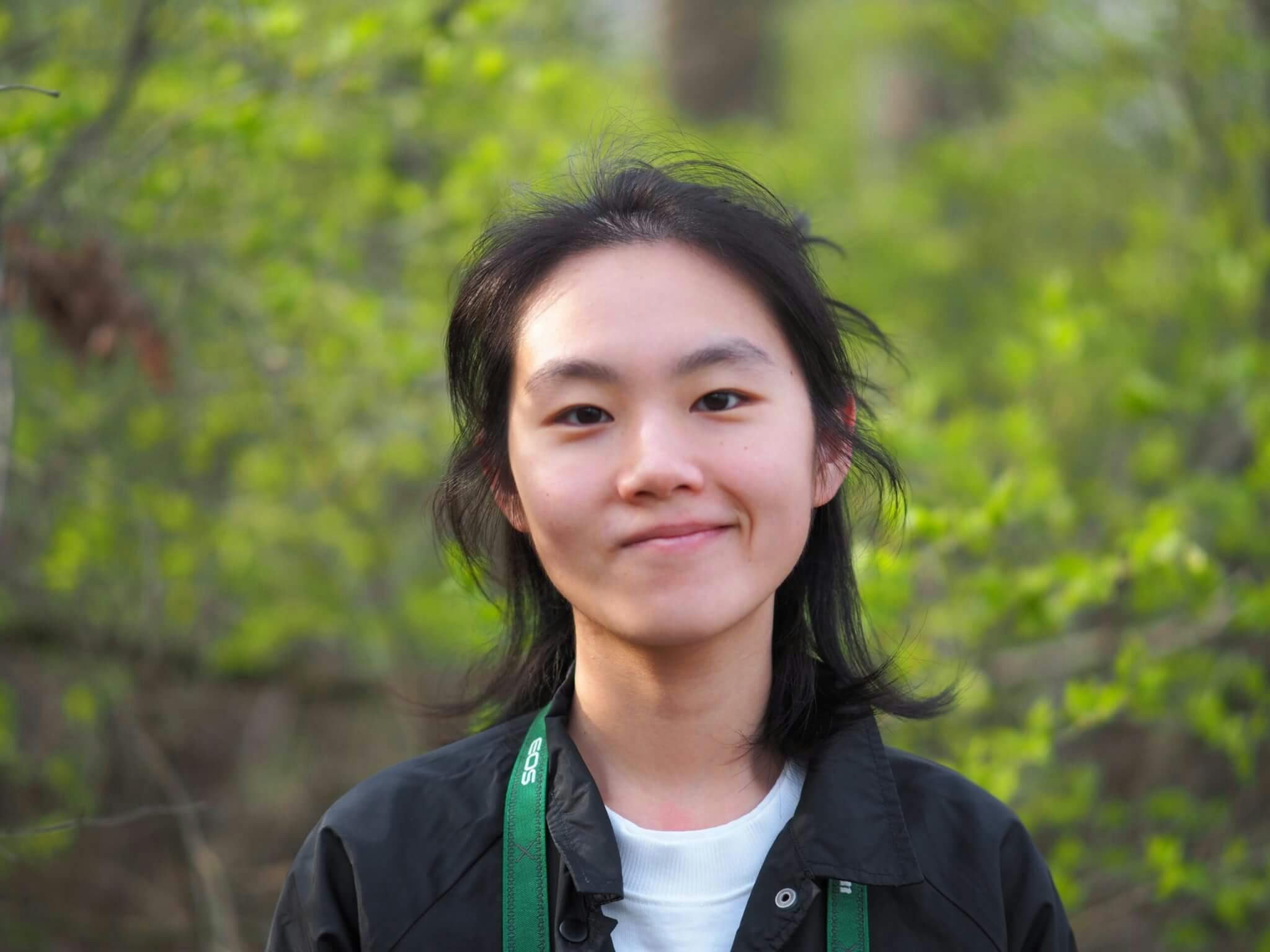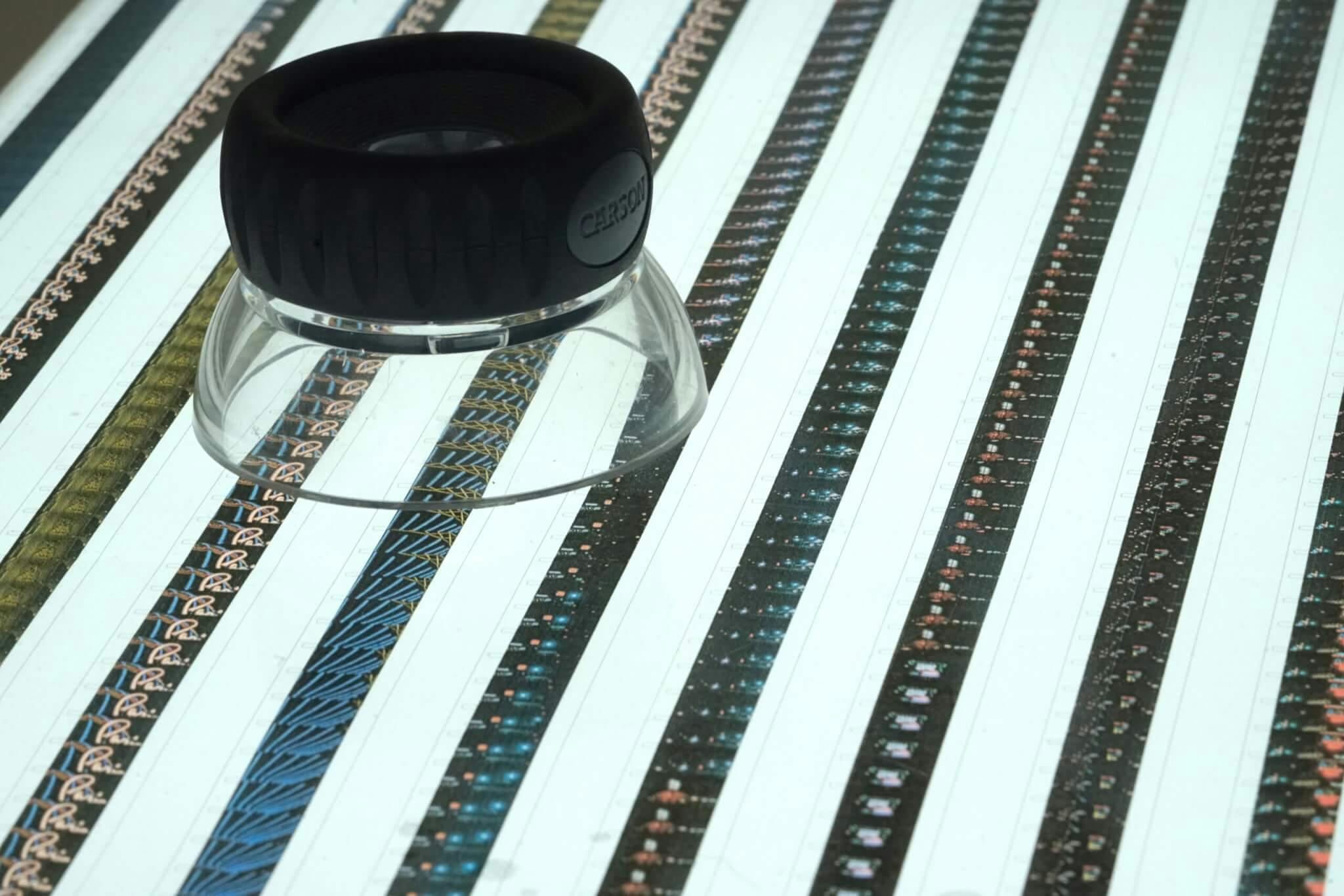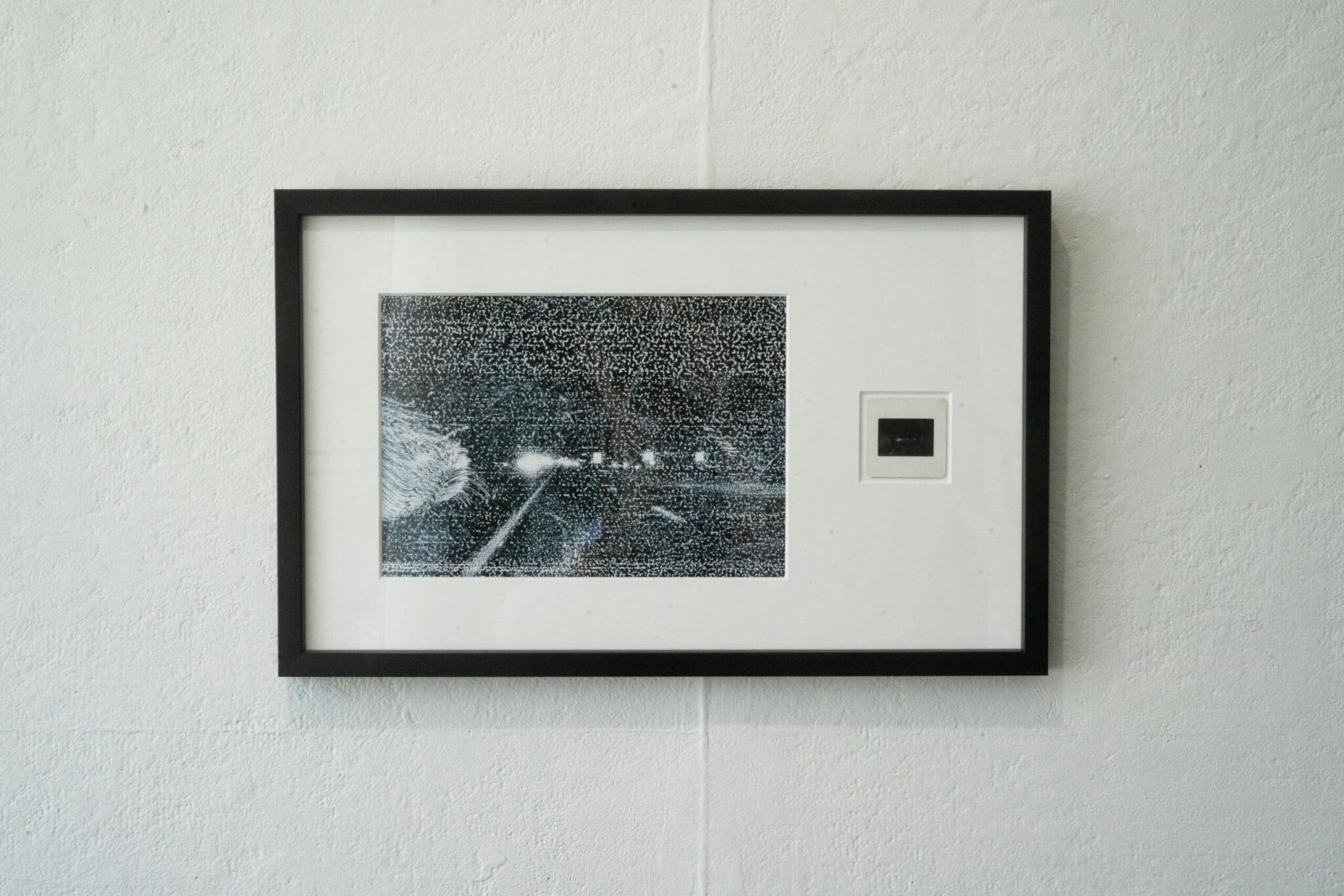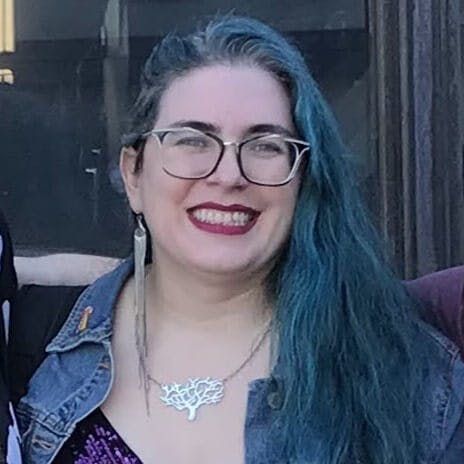“Each time it runs through the projector, it is never going to be the version you saw earlier,” Lilan Yang says, referencing the wear and tear that naturally occurs when playing 16mm film, a format that features prominently in her solo exhibition “Nowhere Near” at Gallery 263. She’s intimately aware of that, having made the looping device that plays one of her films as part of the show, creating new projection throughout the duration.
Originally from Chongqing, China, Yang has a master’s of fine arts in Digital + Media from Rhode Island School of Design (RISD) and has taught at RISD and Parsons School of Design. This summer, she is an artist in residence at the Cambridge gallery, where she has been working in still film photography, 16mm film, and film-based installations, often dealing with cities and landscapes, memory, and the physical reality of film as a medium that wears over time.
“Physical reality” as in having your filmstrip break and “go everywhere” when she was screening her MFA thesis film. “It was very stressful,” Yang says. “But then, my mentor made me feel better, by saying that maybe this is part of the work and it’s meant to be broken. Ever since I was like, ‘Okay, fine. That’s what just happened.’ So right next to it, there’s always gonna be a splicer, just in case.”
I caught up with Yang to learn more about the residency and what folks can expect from Saturday’s film screening, which promises the first full-length viewing of her film Everything Comes Full Circle since her thesis presentation, a new version of the film scored by London-based composer Julian Tran, as well as several unedited, unreleased shorts.
This interview has been condensed and edited for clarity.
Delia Harrington: This is your first solo show, right? What kind of themes are you working with?
Lilan Yang: Yeah, it is. At its core, I think this exhibition is really a metaphor for memory. I’m interested in the natural process of film degrading in the same way that memories fade. The films on view at the gallery and that will be a part of the screening all feature sites and symbols that epitomize the American West. During my residency at the gallery, I really tried to just be in the space and spend time in the neighborhood. I used to live in this neighborhood, but didn’t spend a lot of time here because I was commuting back and forth to Providence. It’s been really special to revisit a place that I had very few specific memories of.
A lot of the pieces here are newer works that I’ve been making since my graduation last year. And this is kind of like a summary of what I’ve been up to this year.
DH: You have a background in STEM, right? I know that body of work is not really featured in this show, but is that how all the machine learning and AI come into play in your work?
LY: Yeah, I think so. In undergrad, I studied computer engineering. At the very beginning, I was interested in data visualization, how data tells stories, and was also interested in films. I think it all really came together after watching Paris, Texas by Wim Wenders. Before filming Everything Comes Full Circle which I began thinking about and working on in 2018, I did a data visualization project about the locations in Paris, Texas. I flagged where they shot certain scenes and what kind of movement they’re trying to capture. Then in the summer of 2020, I went to the locations to document them, too. You can think of it as a road trip film, or going back and forth between Texas and California, even though underneath all that lovely and rich cinematography there’s the narrative happening that always haunts me.
DH: I noticed a lot of your work does have this sort of American West feel to it even when slightly distorted or hard to see. I was going to ask where that comes from. Did it originate with the Paris, Texas project?
LY: Yes, I visited all the sites I could possibly find. I’m just fascinated by, not necessarily the idea of Americana, but I love the sense of how…the gas stations, the motels, in a way they’re very, very American. And they’re things I love to photograph because of how beautiful they look in the dark. But then of course there’s so many layers, like how people were saying that some of the landmarks in Boston are actually from big oil companies. There’s Citgo on the other side of the river, and then the Shell sign here in Cambridgeport.
DH: So you’re going to show your MFA thesis film, Everything Comes Full Circle. What else can visitors expect?
LY: Yes. I’ll start with some of the shorts I did. I will be showing like a whole roll because you shoot with a film camera and normally have like a hundred feet of film, like in a row, and then that’s three minutes. I kind of wanted to show it as the most original format because of having a space to be able to have all the equipment to show it. And then the second part will be Everything Comes Full Circle. I’ll be showing the kind of digitally fabricated version, which I call the “pseudo film” version. It’s not a chemical process. It’s all inkjet printing or laser cutting. I’ll be showing the fabricated version first and then show the digital version. So there’s kind of a sense of revealing what’s actually on the image and what was additional, the music and scores that go with it. So it’s like a new touch on the film. I think the entire screening will be around forty minutes long.
DH: What will the screening be like?
LY: So the gallery’s window, I have made it like a rear projection screen. So people inside the gallery are able to watch it, and so will the people that are outside. Whenever they walk by they can see things happening on there. And that’s also part of the plan. I enjoy how there’s two sides of things. You can hear the projector running with additional music or narration, but then on the outside, you can just see the image. It’s like any story—there’s always two sides.
“Nowhere Near” is on view at Gallery 263 in Cambridge with special gallery hours (Saturday & Sunday, 1–4 pm) through August 28. There is a film screening Saturday, August 26. Doors at 7:30 pm; screening at 8 pm. RSVP here.




